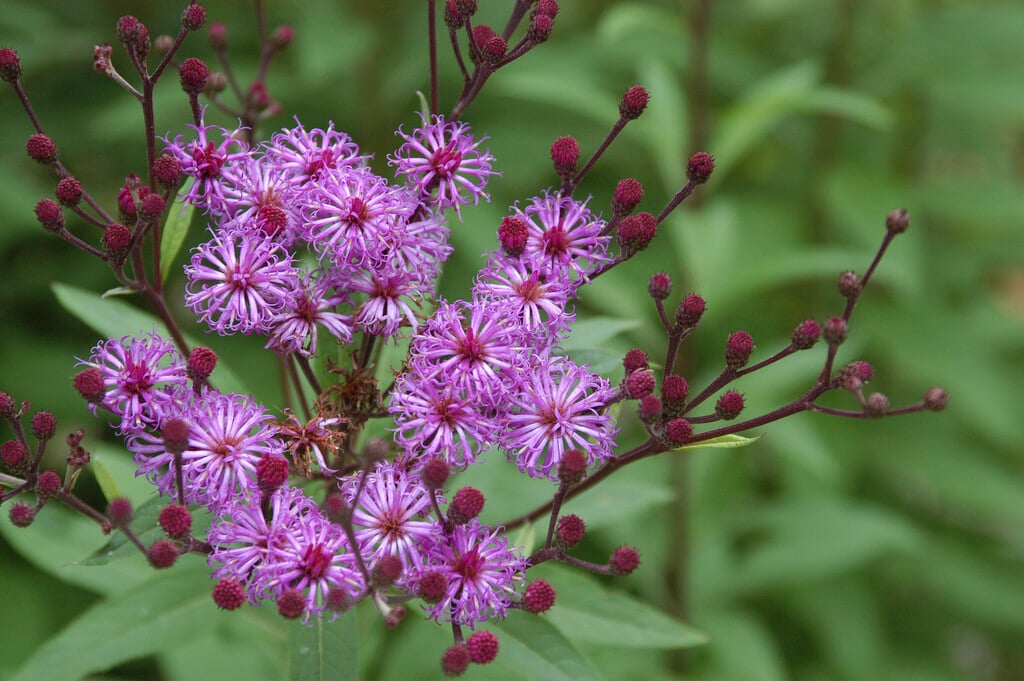Size
Ultimate height
1.5–2.5 metresTime to ultimate height
2–5 yearsUltimate spread
1–1.5 metresGrowing conditions
Moisture
Moist but well–drained, Poorly–drainedpH
Acid, Alkaline, NeutralColour & scent
| Stem | Flower | Foliage | Fruit | |
| Spring | Green | |||
|---|---|---|---|---|
| Summer | Green | |||
| Autumn | Purple Pink | Green | ||
| Winter |
Position
- Full sun
- Partial shade
Aspect
South–facing or East–facing or West–facing
Exposure
Exposed or Sheltered Hardiness
H7Botanical details
- Family
- Asteraceae
- Native to GB / Ireland
- No
- Foliage
- Deciduous
- Habit
- Clump forming
- Genus
Vernonia are annuals, perennials, climbers, sub-shrubs, shrubs and trees, though only the perennials are in cultivation. They have upright stems, simple, stalkless leaves and flat branched heads of tubular purple or reddish pink, occasionally white, flowers
- Name status
Correct
- Plant range
- North America
How to grow
Cultivation
Grow in a light, moderately fertile, moist soil preferably in full sun but will tolerate partial shade
Propagation
Propagate by seed or by division
Suggested planting locations and garden types
- Cottage and informal garden
- Prairie planting
- Wildlife gardens
- Flower borders and beds
Pruning
Deadhead to prolong flowering and, if necessary, to prevent self-seeding
Pests
Generally pest-free
Diseases
Generally disease-free
Love gardening
Sign up to receive regular gardening tips, inspiration, offers and more
View our Privacy Policy
Get involved
The Royal Horticultural Society is the UK’s leading gardening charity. We aim to enrich everyone’s life through plants, and make the UK a greener and more beautiful place.
